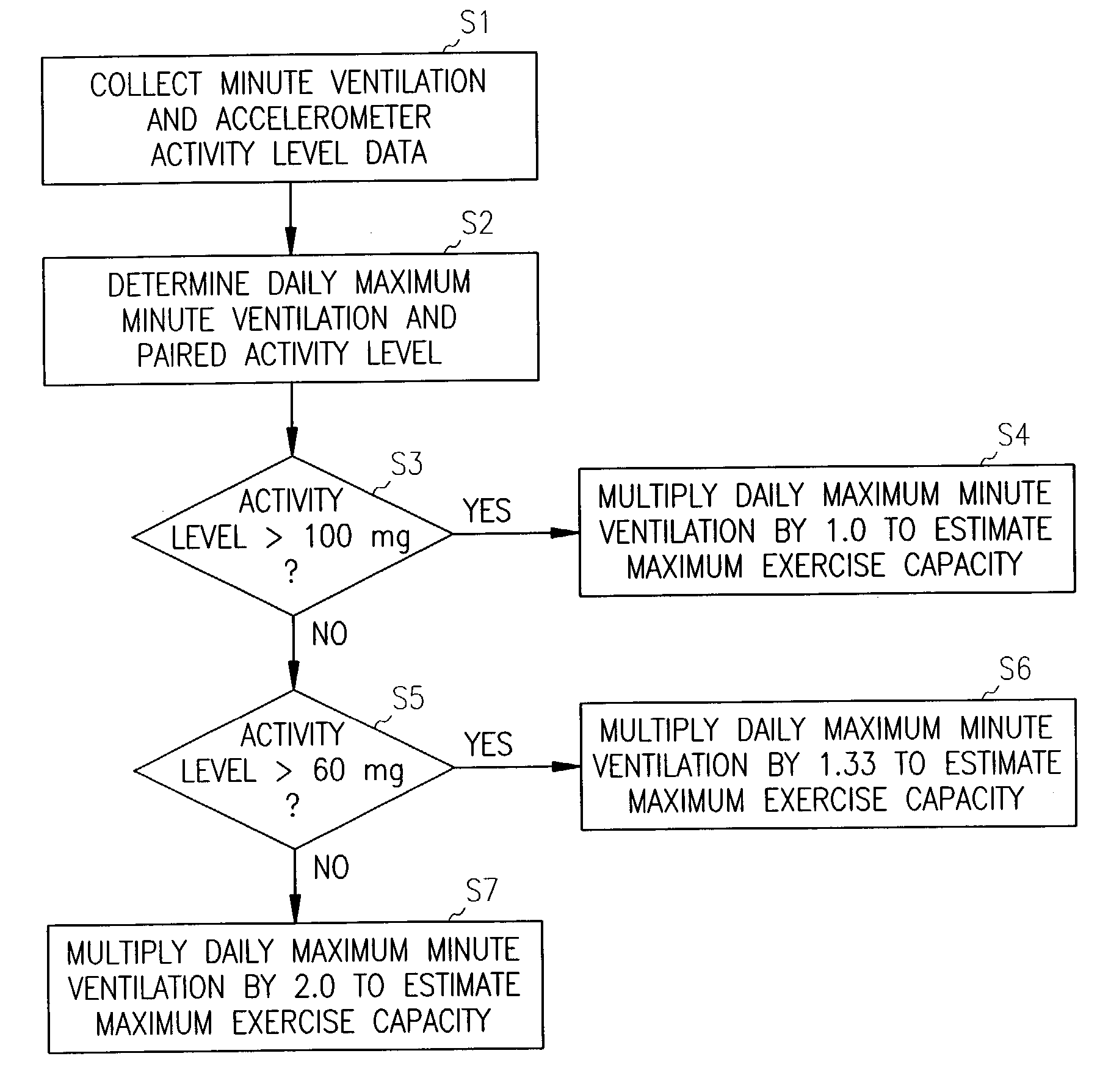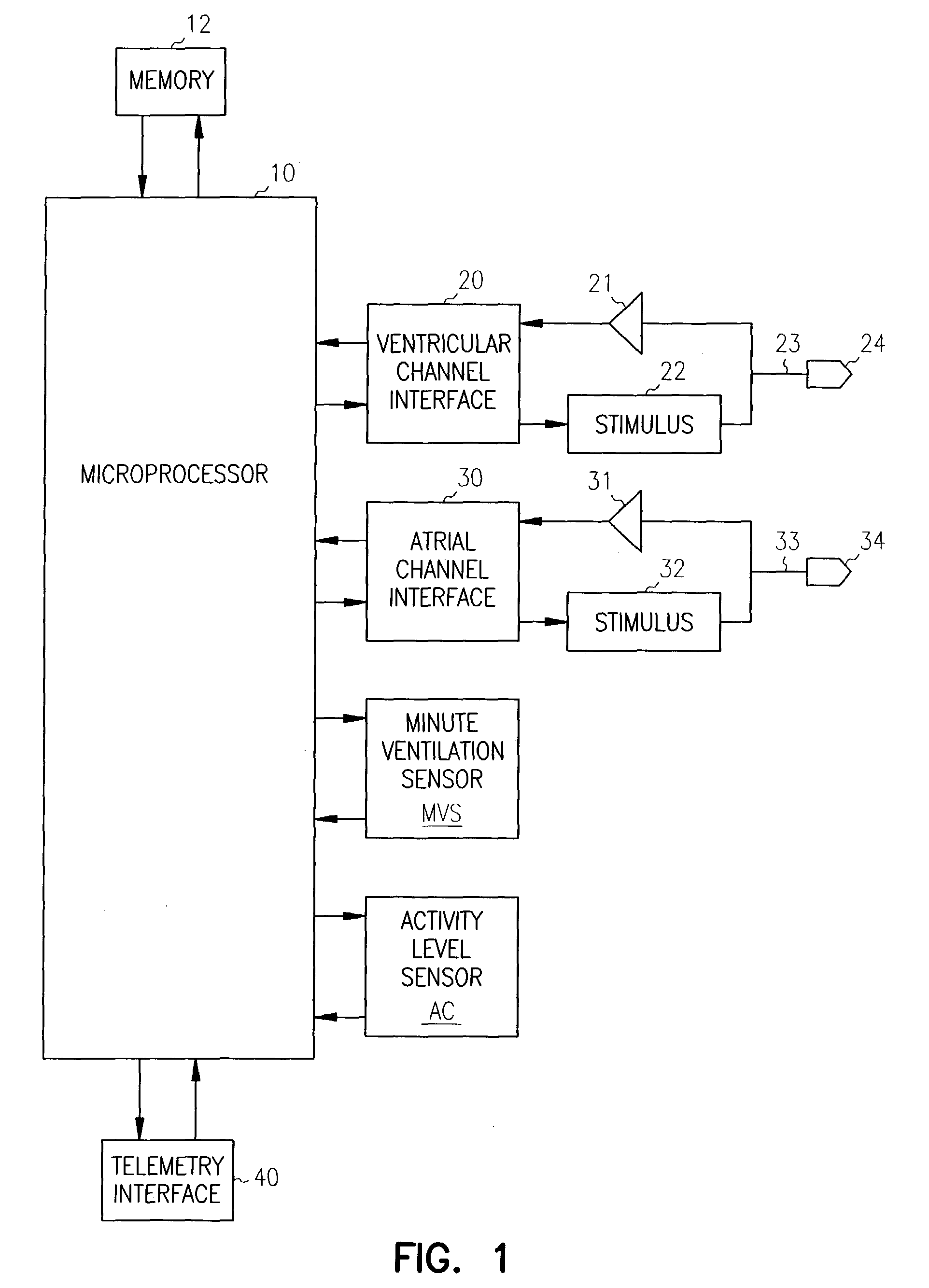Rate-adaptive therapy with sensor cross-checking
a sensor and rate-adaptive therapy technology, applied in the field of automatic adjustment of the operating parameters of the rate-adaptive cardiac pacemaker, can solve the problems of loss of atrial fibrillation, negative hemodynamic effects, and inability to increase the heart rate with increased metabolic demand
- Summary
- Abstract
- Description
- Claims
- Application Information
AI Technical Summary
Benefits of technology
Problems solved by technology
Method used
Image
Examples
Embodiment Construction
[0015]A particular implementation of a rate-adaptive pacemaker as shown in FIG. 1. As used herein, the term pacemaker should be taken to mean any cardiac rhythm management device with a pacing functionality including an implantable cardioverter / defibrillator that includes a pacemaker. A pacemaker controller senses cardiac events through a sensing channel and outputs pacing pulses to the heart via a pacing channel in accordance with a programmed pacing mode. A microprocessor serves as the controller in this embodiment and communicates with a memory 12 via a bidirectional data bus 13. The memory 12 typically comprises a ROM or RAM for program storage and a RAM for data storage. The pacemaker has atrial sensing and pacing channels comprising electrode 34, lead 33, sensing amplifier 31, pulse generator 32, and an atrial channel interface 30 which communicates bidirectionally with a port of microprocessor 10. The device also has ventricular sensing and pacing channels comprising electrod...
PUM
 Login to View More
Login to View More Abstract
Description
Claims
Application Information
 Login to View More
Login to View More - R&D
- Intellectual Property
- Life Sciences
- Materials
- Tech Scout
- Unparalleled Data Quality
- Higher Quality Content
- 60% Fewer Hallucinations
Browse by: Latest US Patents, China's latest patents, Technical Efficacy Thesaurus, Application Domain, Technology Topic, Popular Technical Reports.
© 2025 PatSnap. All rights reserved.Legal|Privacy policy|Modern Slavery Act Transparency Statement|Sitemap|About US| Contact US: help@patsnap.com



